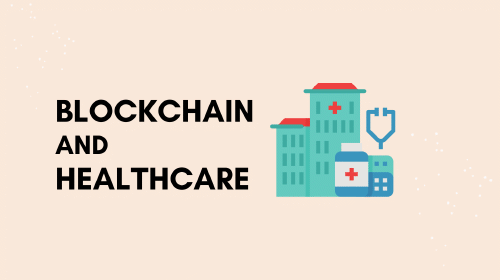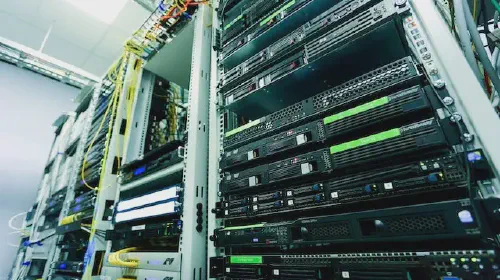Demystifying Cybersecurity: A Comprehensive Guide - Understanding Cyber Threats, Best Practices, and Emerging Trends
Salomon Kisters
Jun 22, 2023This post may contain affiliate links. If you use these links to buy something we may earn a commission. Thanks!
Cybersecurity is one of the most important topics of discussion in today’s digital age. However, it can be a daunting and overwhelming subject to understand. With news headlines reporting on data breaches and hacks happening on a daily basis, it is essential to have a basic understanding of cybersecurity.
This blog post aims to provide a comprehensive guide to demystifying the world of cybersecurity. We will break down complex technical jargon and explain the basics of cybersecurity in simple terms. We will also cover various types of cyber threats that individuals and organizations face, and discuss the best practices to protect against them.
Whether you are a beginner or someone with a decent understanding of cybersecurity, this guide will provide useful insights and practical tips to safeguard your online presence. So, let’s dive in and explore the world of cybersecurity together.
The Basics of Cybersecurity
The world of cybersecurity can be confusing and intimidating, especially for those who are just starting to explore this subject. Here are some of the most important cybersecurity terminologies and concepts that you should understand:
Threat - Any potential danger to your computer systems or data.
Vulnerability - Weaknesses in your computer systems or programs that can be exploited by cybercriminals.
Exploit - A technique used by cybercriminals to take advantage of a vulnerability in your computer systems or programs.
Malware - Any software that is designed to cause harm to your computer systems or data. Examples include viruses, worms, Trojans, ransomware, and spyware.
Phishing - A social engineering technique used by cybercriminals to trick you into revealing sensitive information, such as usernames, passwords, and credit card details.
Encryption - The process of converting data into a secure code to prevent unauthorized access.
Firewall - Software or hardware that monitors and controls incoming and outgoing network traffic to protect against cyber attacks.
By understanding these basics, you can start to unravel some of the complexities of the cybersecurity world. In the next section, we will delve deeper into the different types of cyber threats that you may encounter.
Common Cyber Attacks and Their Impact
As society becomes increasingly reliant on technology, cyber threats have become a significant concern for individuals and businesses alike. Here are some of the most common cyber attacks and their impact:
Phishing Attacks - Phishing is a social engineering attack that aims to trick individuals into providing sensitive information. The impact of these attacks can range from minor inconveniences, such as spam emails, to significant financial losses resulting from stolen identities or compromised bank accounts.
Malware Attacks - Malware can take many forms, including viruses, worms, and Trojans. These attacks can result in the loss of sensitive information or the disruption or destruction of computer systems.
Ransomware Attacks - Ransomware attacks involve encrypting a victim’s data and demanding payment in exchange for the decryption key. The impact of ransomware attacks can be significant, ranging from minor inconvenience to the complete loss of valuable data.
DDoS Attacks - Distributed denial-of-service (DDoS) attacks involve overwhelming a website or network with traffic. These attacks can result in websites becoming inaccessible or slow to access, and in some cases, the network itself can become completely overwhelmed.
Cybersecurity Measures
With cyber threats becoming increasingly prevalent, it’s essential to take measures to protect yourself and your business. Here are some cybersecurity measures that can help safeguard against cyber attacks:
Use Strong Passwords - Weak passwords are a significant vulnerability, as they can be easily guessed or hacked. Use strong, complex passwords for all accounts, and consider using a password manager to keep track of them.
Keep Software Up to Date - Software updates often contain patches for known security vulnerabilities, so it’s essential to keep all software up to date.
Implement Cybersecurity Education and Training - Cybersecurity education and training can help employees understand how to identify and prevent cyber attacks.
Install Antivirus and Antimalware Software - Antivirus and antimalware software can detect and remove malicious software before it can cause harm.
Secure Your Network - Securing your network with firewalls, intrusion detection systems, and other security measures can help prevent cyber attacks.
Cybersecurity Best Practices
In addition to the cybersecurity measures mentioned earlier, there are some best practices individuals and businesses can adopt to keep their digital life secure:
Be cautious with emails - Phishing attacks are one of the most common cyber threats, where attackers try to trick users into clicking on a malicious link or sharing sensitive information. Always verify the sender and the content of an email before taking any action.
Use Two-Factor Authentication - Two-factor authentication adds an extra layer of security by requiring a password and a secondary verification method, such as a text message or a fingerprint, to access an account.
Back up your data - Regularly back up your data to an external hard drive or a cloud storage service to protect against data loss in case of a cyber-attack or a hardware failure.
Avoid public Wi-Fi networks - Public Wi-Fi networks are often unsecured, making it easy for cybercriminals to intercept data sent over the network. Use a virtual private network (VPN) when connecting to public Wi-Fi networks.
Limit personal information online - Avoid sharing too much personal information online, as it can be used by cybercriminals to steal your identity or carry out targeted attacks.
By following these best practices, you can significantly improve your cybersecurity posture and protect your digital life from cyber threats.
Emerging Trends and Technologies to Look Out For
As the cyber threat landscape evolves, it is crucial to stay up-to-date with emerging trends and technologies to effectively protect against cyber attacks. Here are some cybersecurity trends and technologies to look out for in the future:
Artificial Intelligence (AI) - AI-powered tools and solutions can analyze massive amounts of data and identify patterns and anomalies that humans may miss, allowing for faster detection and response to cyber threats.
Blockchain Technology - Blockchain technology can provide a secure and decentralized system for storing and sharing data, making it harder for cyber criminals to access and manipulate sensitive information.
Cloud Security - As businesses increasingly move their data and applications to the cloud, cloud security becomes a critical area of focus to prevent data breaches and unauthorized access.
Internet of Things (IoT) Security - With the proliferation of IoT devices, such as smart home devices and wearables, securing these devices becomes crucial to prevent them from being hijacked and used in cyber attacks.
Quantum Computing - Quantum computing can potentially break many of the encryption algorithms that are currently used to protect data, highlighting the need for stronger and more advanced encryption methods in the future.
Conclusion
Cyber threats are becoming increasingly sophisticated and widespread, making cybersecurity a critical concern for individuals and businesses alike. Failure to implement proper cybersecurity measures can result in devastating consequences, such as financial loss, reputational damage, and even legal action.
It is essential to recognize the importance of taking action now to protect against cyber threats. This involves implementing effective security measures such as firewalls, antivirus software, and data encryption tools to safeguard sensitive information. Regularly updating software and firmware, creating strong passwords, and using multi-factor authentication can also help mitigate the risk of cyber attacks.
Moreover, cybersecurity is not a one-time solution, but a continuous process. It requires ongoing effort and attention to ensure that security measures remain up-to-date and effective. Regular training and awareness programs for employees can also help prevent security breaches caused by human error.
In conclusion, demystifying cybersecurity can be a daunting task, but with the right approach, it can be manageable. By staying informed about emerging trends and technologies, implementing effective security measures, and continuously monitoring and updating cybersecurity protocols, individuals and businesses can better protect themselves against the ever-evolving cyber threat landscape.
Stay informed with the latest insights in Crypto, Blockchain, and Cyber-Security! Subscribe to our newsletter now to receive exclusive updates, expert analyses, and current developments directly to your inbox. Don't miss the opportunity to expand your knowledge and stay up-to-date.
Love what you're reading? Subscribe for top stories in Crypto, Blockchain, and Cyber-Security. Stay informed with exclusive updates.
Please note that the Content may have been generated with the Help of AI. The editorial content of OriginStamp AG does not constitute a recommendation for investment or purchase advice. In principle, an investment can also lead to a total loss. Therefore, please seek advice before making an investment decision.

How Many Crypto Millionaires are There?
In this article, we'll explore the world of cryptocurrencies and examine how many cryptocurrency millionaires there are, as well as the factors that could influence that number in the coming years.

Blockchain Revolutionizing Healthcare: 6 Practical Applications
Discover how blockchain technology is transforming healthcare with secure patient data, holistic health records, drug traceability, genomics data security, smart contracts, and research incentives.

What is FileCoin and How Does it Work?
Let’s take a closer look at what Filecoin has done, and then take a look at the cryptocurrency itself.
Protect your documents
Your gateway to unforgeable data. Imprint the authenticity of your information with our blockchain timestamp